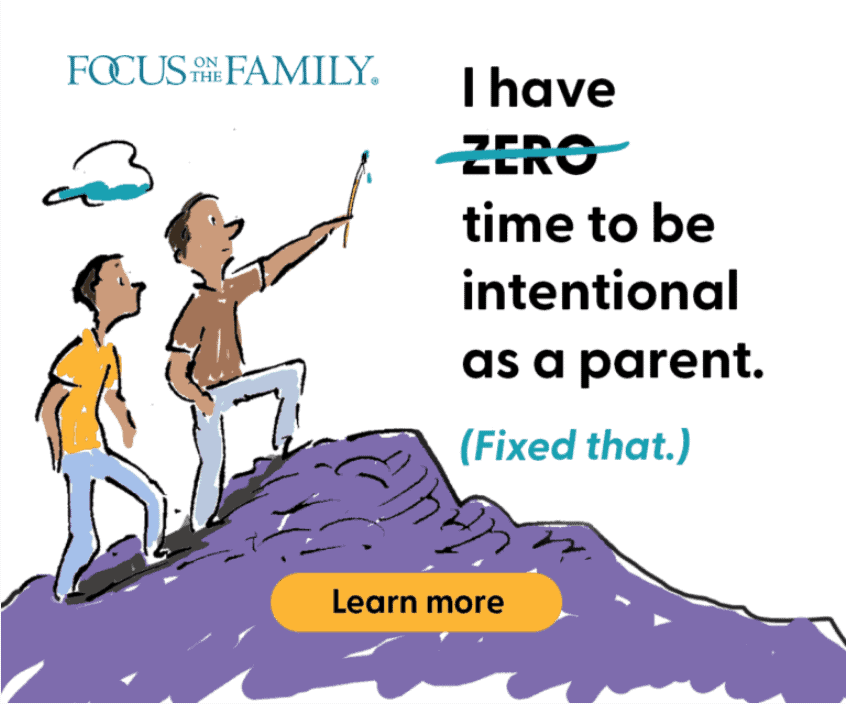Michelle was trying to prepare lunch while her 6-year-old daughter, Ella, and her 8-year-old son, Will, were playing in the den. At least Michelle thought they were playing. It soon started to sound more like warfare. As the conflict escalated, Michelle hurried in to see Will hit his sister across the back with a stuffed bear and Ella begin to cry.
“She stole my book,” Will shouted.
“I did not!”
Michelle yelled at Will, “Go to your room!” Then she turned to Ella. “Haven’t I told you not to take your brother’s things?”
“I didn’t,” Ella protested. “I was trying to get on the couch, and he hit me.”
“I don’t want to hear it,” Michelle said. “I can’t even make lunch without you two fighting. Go to your room, and I’ll call when it’s ready.”
“You always blame me!” Ella sobbed.
From the kitchen, Michelle heard Ella’s door slam. She sighed, knowing she could have handled the episode better.
Few parental responsibilities are more important than teaching children how to constructively handle anger. Yet many parents feel ill-equipped. When we observe our children mishandling anger, we often panic and respond negatively ourselves, thus missing an opportunity to train them. Having been such a panic-stricken parent myself, I have empathy for parents who struggle with this responsibility.
Anger is a response to some event or situation in life that causes irritation, frustration or pain. All children will experience anger, a feeling that, by itself, is not wrong or sinful. Since parents are the most influential people in a child’s life, our task is to help our children develop a healthy pattern of anger management. Here are a few principles that you can apply to help your kids process anger better.
Build the foundation
Nothing is more fundamental in teaching a child to handle anger than giving the child unconditional love. Why am I bringing up love in a discussion about anger? Because in many ways, love and anger are opposites. Love draws you toward the person; anger pits you against the person.
If a child does not feel loved — if his emotional “love tank” is not filled every day — the empty tank itself becomes a source of anger. So not only will the child experience greater anger, but he will also reject a parent’s teaching on how to process this anger.
Demonstrate your love to your child every day. The message our children need to hear and feel constantly is: “I love you no matter what you do. I don’t always like what you do, but I will always love you.” Children need love in the same way they need food. The love tank empties quickly, much like the stomach. We must give heavy doses daily.
Manage your own anger
“We’ve always just screamed at each other.”
Two parents actually admitted this to me when I asked how they usually responded to anger in their home and what process they were modeling for their son. It reminded me again that many adults don’t really consider their own anger-management skills until they observe their children’s response to anger, which often simply mirrors what they have learned from their parents.
Fortunately, parents can learn to change destructive patterns and model loving, noncondemning anger-management skills. I encourage parents to develop a simple plan for handling anger — a plan to agree that anger is real, to avoid attacks against others during the heat of anger and to always seek more information when working through disputes. Much of our anger is a result of simply not knowing the other side to a story, so we have to look for a resolution that satisfies both parties. Having this kind of plan in place beforehand can help calm and direct conversation when anger surfaces, and it gives kids a healthy model for anger management that they can begin to apply to their own lives.
Give guidance in the moment
A child really only has two ways to express anger: verbally and behaviorally. Each can be positive or negative. Behaviorally, a child may start pushing, hitting or throwing objects. Obviously, these are negative responses. But leaving the room, counting to 100 aloud or taking a walk outside are mature behavioral responses to anger that allow the child to cool down.
On the verbal side, kids may yell and scream or may use name-calling or other destructive ways of verbalizing anger. The mature child acknowledges to the parent that she is angry and asks for an opportunity to discuss her concerns.
Our goal is to help kids move from their current place of immaturity to healthier levels of processing anger. We need to be careful, however, that we don’t expect more maturity than our kids are capable of. It’s not uncommon for parents to tell an angry child, “You cannot talk to me that way. Don’t raise your voice at me again.” But this is often an unrealistic expectation of maturity from the child. Indeed, parents too often expect a level of maturity that we’ve not yet attained ourselves. As a boy once said to me, “My parents yell and scream at me, telling me not to yell and scream at them.”
When your child is responding negatively to anger, take a walk with him or sit him down to talk. Let him discuss his feelings. The more you listen and ask questions, the more likely his volume will decrease. Concentrate on the reason your child is angry, not on the way he is expressing it. Seek to understand what he thinks is unfair. You may not agree. Often a child’s anger is distorted and misplaced. But you must hear him out. The anger will not go away until he feels that you have heard and understood his complaint. Indeed, if a parent consistently doesn’t seek to understand the source of a child’s anger, those feelings can become internalized and later show up in more severe negative behaviors.
After you have had a “listening session” with an angry child, the next morning you might say, “I really appreciate your sharing your anger about that situation. We may not always agree, and we’ll continue learning to express feelings more calmly, but I always want to hear how you feel and think.”
If you listen and ask questions, in time your child will learn to process anger in a more conversational tone. Shouting matches will gradually diminish. I know this isn’t easy. Parents who have never learned to control their own anger may find it hard to imagine taking this approach. But children desperately need our guidance, and only when we learn to handle our own anger in a healthier manner are we truly able to guide our children in processing their anger.
Provide biblical instruction
Most parents want to start a new parenting process with instructions. “Here are some things you need to know,” they may begin. Yes, instruction can be an effective method of communicating, but it is used best as the last step. If the heart of the child has not been cultivated by unconditional love, positive modeling and loving guidance on the part of parents, then the seed of instruction is not likely to grow. But once a child’s heart has been cultivated, instruction can be an excellent method of working through anger.
For the young child, reading and discussing Bible stories that focus on anger provides a good format for instruction. Stories such as Cain and Abel, Joseph and his 11 brothers, Jonah and his anger toward God, and Jesus and His anger toward the money changers all provide key insights into understanding anger.
The wisdom found in Proverbs provides another effective springboard for conversations on anger. Consider:
- “Whoever is slow to anger has great understanding, but he who has a hasty temper exalts folly.” (Proverbs 14:29)
- “Good sense makes one slow to anger, and it is his glory to overlook an offense.” (Proverbs 19:11)
Two other great verses for your child to memorize are Ephesians 4:26-27: “Be angry and do not sin; do not let the sun go down on your anger, and give no opportunity to the devil.”
Much of your instruction on anger will likely take place in informal, open conversations. Allowing your child to freely ask questions can lead to healthy discussions on how both of you have processed anger in the past and what positive changes might be made. It’s also helpful to share your own struggles with anger. This creates an atmosphere that allows your child to express his or her own struggles.
When you talk about your anger — or anger in general — rather than the child’s anger, you make it easier for your child to respond. In responsibly acknowledging failures, you are teaching your child not only what is right and wrong about anger, but also how to confess failures when he or she doesn’t handle anger well.
A positive model, loving guidance and instruction that does not condemn are the most powerful approaches to teaching your children positive anger management.
Dr. Gary Chapman is a counselor and the author of several books on marriage and parenting, including the bestselling “The 5 Love Languages”series. This article was adapted from Anger: Taming a powerful emotion, copyright © 2014 by Dr. Gary Chapman. Used with permission of Moody Publishers.





















